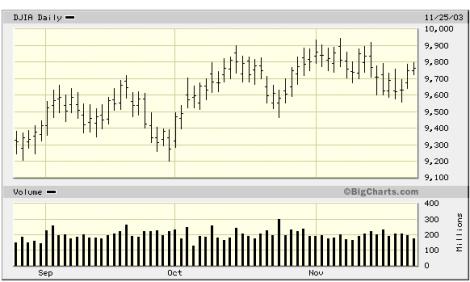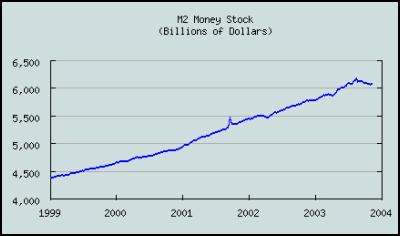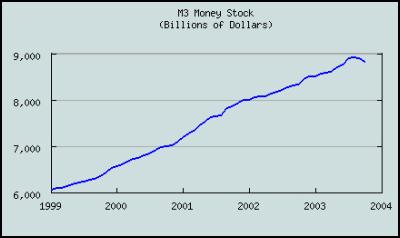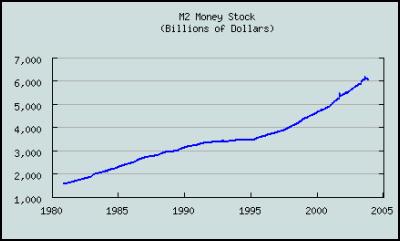A $64Bn Dollar Gorilla At The Fed - What The Pointy Heads Are Saying About The Gorilla
NOTE: Authors of this report will be anonymous and wide ranging, and occasionally finely balanced. Indeed you are invited to contribute: The format is as a reporters notebook. It will be published as and when material is available. C.D. Sludge can be contacted at sludge@scoop.co.nz. The Sludge Report is available as a free email service..Click HERE - http://www.scoop.co.nz/mason/myscoop/ to subscribe...

King Kong Circa 1933 - Is History Repeating?
Sludge Report #161
A $64Bn Dollar Gorilla At The Fed
Rampant growth reports coming out of the United States have many market commentators a bit confused. According to the statistics the US economy is growing at scorching 8% a year. This is the sort of rate you expect out of developing tiger economy like China's which has been creating jobs at the same rate that the NZ dairy industry has been making blocks of cheese for decades.
But if these stats are kosher, how come the US job market is growing so slowly? Also, if the sun is shining so hard in the home of the brave, why is the dollar tanking, and why does the last three months on Wall Street look like this….

http://img.scoop.co.nz/stories/images/0311/6f1f90ff9e36a1d5ac7a.jpeg
… If you look closely at this chart you will see that not only has the almighty Dow Jones Index shrugged off the news in recent months that the US economy is on steroids in price terms, but volumes being traded are also down.
So what is going on?
Well that of course is the $64 billion question and Sludge does not claim to know the answer.
But that said Sludge has spotted a large gorilla in the room that is not getting sufficient attention. When looking at the US economy there is one aspect of the picture that is definitely very very odd.
Since September US aggregate Money Supply has been in decline. Sharp decline.

http://img.scoop.co.nz/stories/images/0311/3cd423990445183c5bbc.jpeg
The above picture shows what the US aggregate Money Supply measures are made up of. M1 is basically cash and cash-like money, cheque accounts etc. M2 is M1 + domestic deposits and retail funds (roughly speaking money that belongs to real people). M3 is M2 + wholesale money, corporate money and money market money.
And according to the last three months of Federal Reserve data both M2 and M3 are in decline.

http://img.scoop.co.nz/stories/images/0311/2a1c3667085e00486954.jpeg
SOURCE: http://research.stlouisfed.org/fred2/series/M2/24
The above picture shows M2 over the last few years. The latest observations on a weekly basis for this index in billions of US dollars are:
2003-10-20 6090.0
2003-10-27 6076.5
2003-11-03 6071.6
2003-11-10 6080.5
As you can see while there was a little jump in the most recent week ,there has been a marked decline over the four week period. This decline in fact goes back at least 13 weeks.

http://img.scoop.co.nz/stories/images/0311/37aa885070751db3d8b8.jpeg
SOURCE: http://research.stlouisfed.org/fred2/series/M3SL/24
The above picture shows a similar story with United States M3.
The latest observations on a weekly basis for this index in billions of US dollars are:
2003-07-01 8906.934
2003-08-01 8934.177
2003-09-01 8915.739
2003-10-01 8843.053
Comparing the two sets of figures you can see there is a fair bit of volatility but the most recent M3 figures indicate a phenomenal rate of wholesale market monetary destruction, more than $11 Billion a day!
The second important thing observers need to note about this latest episode of monetary destruction is that it is not normal.

http://img.scoop.co.nz/stories/images/0311/70d8c61bf57c1909daf1.jpeg
The image above shows M2 back to 1980. And as you can see there is no period of decline in recent market history. The records for M3 go back further and similarly show no comparable period of decline as far back as the 1950s.

http://img.scoop.co.nz/stories/images/0311/70d8c61bf57c1909daf1.jpeg
Of course, if the graph went back all the way to 1929 a different picture would emerge. There has been significant monetary base contraction in the past, and when it happened it was not pretty.
What The Pointy Heads Are Saying About The Gorilla
Well on discovering this Gorilla Sludge immediately sought the views of the NZ Reserve Bank. They ought to be interested one would think. But as it happens were not open for discussions about money supply issues, period. And to be fair the bank is about to announce an interest rate decision on December 4th, and therefore may want to hold their thunder.
So with nada to be illuminated at No. 2. The Terrace, Sludge moved on to the private sector where Deutsche Bank's chief economist Ulf Schoefisch similarly had little to say about the monetary contraction in the US. He did however suggest Sludge get back to him early next week on the subject.
Google news performed far better (as it always does) showing a useful article on the question by CBS Marketwatch's chief economist Dr. Irwin Kellner. Weller is also professor of economics at Hofstra University and chief economist of North Fork Bank.
In his article ( http://tinyurl.com/wkzs ) Kellner explains in plain English some of the background to the controversy over whether anybody seeking answers to anything economic should look at monetary aggregates at all:
"There's a school of economic thought that considers a decline in the money supply -- such as the one that's been taking place over the past two months -- a sign that the Fed is tightening monetary policy.Known as monetarists, these economists believe that the Fed has total control over the country's money supply and that if it falls, it's because the Fed wants it to. I'm not so sure about this, as I will explain below.
They also think that a shrinking money supply -- intended or not -- has a major effect on the economy and the financial markets if it lasts long enough. Here, you'll find no disagreement from most economists, including me."
In the end however Kellner has no actual explanation for the presence of this particular Gorilla at the fed. Rather he just suggests we keep a close eye on it to see what it is doing.
"Could this be another liquidity trap, such as the Fed encountered in the 1930s? Time will tell, in the meantime, keep your eye on the money supply," he says.
Meanwhile over at Thestreet.com Howard L. Simons has also noticed the monetary contraction . His analysis is more technical in nature ( http://www.thestreet.com/_tscs/options/futuresshocktsc/10127307.html )and questions whether the contraction may be partly explained by a move in financing away from bank loans to commercial paper issuance.
He concludes that a long term trend of this nature very poorly explains the $11 billion a day week of monetary destruction experienced last week. He goes on to say that until we see some expansion in the monetary aggregates, we should hold off from declaring the nascent U.S. economic recovery sustainable.
" While an overnight rate of 1.00% may look cheap, it may not be evidence of easy credit conditions in the absence of a growing money supply. It is, however, evidence of slack credit demand. We can excuse slack credit demand as the result of excess capacity in a postbubble environment, but like all excuses, this cannot last forever.Until we see growth in the money supply and in credit demand from the channels of both commercial paper and bank lending, we will need to view the strong economic data as artifacts of fiscal stimulus. In other words, the economic recovery is not yet self-sustaining. "
And thus far these are the only other pieces of analysis discussing this gorilla that Sludge can find on the world wide weirdness. But rest assured, Sludge will be following Dr Kellner's advice keeping a close eye on this gorilla in weeks to come.
Anti©opyright Sludge
2003



 Eugene Doyle: The Fall Of Saigon 1975 - Fifty Years Of Repeating What Was Forgotten
Eugene Doyle: The Fall Of Saigon 1975 - Fifty Years Of Repeating What Was Forgotten Peter Dunne: Dunne's Weekly - Trump's Tariffs Still Pose Risks For New Zealand
Peter Dunne: Dunne's Weekly - Trump's Tariffs Still Pose Risks For New Zealand Keith Rankin: Barbecued Hamburgers And Churchill's Bestie
Keith Rankin: Barbecued Hamburgers And Churchill's Bestie Gordon Campbell: On Why The US Stands To Lose The Tariff Wars
Gordon Campbell: On Why The US Stands To Lose The Tariff Wars Eugene Doyle: Before It’s Too Late - Reimagine New Zealand’s Military Future
Eugene Doyle: Before It’s Too Late - Reimagine New Zealand’s Military Future  Binoy Kampmark: Gender Stunts In Space - Blue Origin’s Female Celebrity Envoys
Binoy Kampmark: Gender Stunts In Space - Blue Origin’s Female Celebrity Envoys